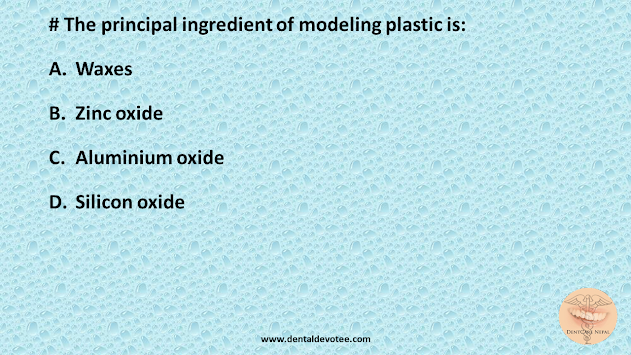# Ease with which impression can be poured without bubble formation is related to:
A. Hardness of impression material
B. Resiliency of impression material
C. Contact angle of the die material with the impression material
D. Surface contamination
The correct answer is C. Contact angle of the die material with the impression material.
When gypsum products are mixed with water to pour dental models in various types of impressions, wetting must occur between gypsum and the impression to ensure good surface quality of the gypsum model. The basic ingredient of the most popular silicone-based elastomeric impression material today is considered to be hydrophobic, because a contact angle of greater than 90° is observed when an aqueous medium is poured into this elastomeric mold. To improve the wettability of the set impression material by a gypsum-water mixture, the operator usually sprays a surfactant (also called debubblizer). The most direct approach by the manufacturer is to incorporate a wetting agent (also known as a surfactant)
in the impression material during the manufacturing process.
Reference: PHILLIPS’ SCIENCE OF DENTAL MATERIALS, Anusavice, Shen, Rawls, 12th Edition, Page No: 27







